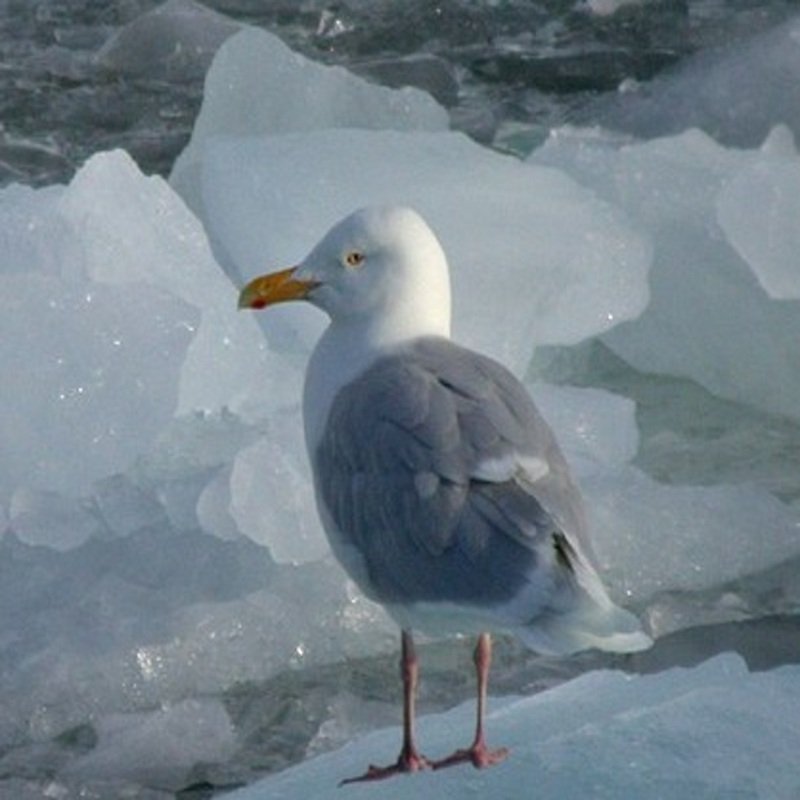Glaucous gull (Larus hyperboreus) is a huge gull, the world’s second largest. It breeds in the Northern Hemisphere’s Arctic areas and winters on the coasts of the Holarctic. The genus name derives from the Latin larus, which appears to have referred to a huge seabird or gull. The particular epithet hyperboreus derives from the Ancient Greek Huperboreoi inhabitants of the far north. “Glaucous” is derived from the Latin glaucus and refers to the gull’s grey color. Burgomaster is an ancient English name for this species.
Quick Overview: Larus Hyperboreus – Glaucous Gull
Body size: Around 26-30 in (66-76 cm) and a weight of 1819 g (64.19 oz)
Main colors: White, Gray, Yellow, Pink
Range: Eastern United States
Migratory Bird: Yes
Best time of the year to see in the U.S.: January, February, December
Conservation Status: Least Concern
Glaucous Gull Description
This huge white gull has a pale gray back and bright eyes. The bill is yellow with a red mark on the lower mandible. The wings are white-edged and white-capped; the legs and feet are pink.

Size
These birds have a length of 26-30 in (66-76 cm) and a weight of 1819 g (64.19 oz). Their wings could range from 56-60 in (142-152 cm).
Feeding
The glaucous gull consumes a diverse diet that includes marine invertebrates, fish, bird eggs, and chicks, as well as small birds and mammals. Additionally, it forages for carrion and rubbish.
Habitat
The glaucous gull nests in colonies on islands, cliff edges, tundra, pond and lake edges, and on the beach. In a dip in the ground, the male and female construct a nest of grass, twigs, moss, and occasionally feathers.
Behavior
These gulls are omnivores, preying on pelagic and intertidal marine invertebrates and fish, as well as the eggs and chicks of waterfowl and seabird species, passerines, small animals, and vegetation. They are opportunistic scavengers who feed on fish, carcasses, and human waste. They forage via wading, plunge-diving, and robbing other seabirds of food.
Larus Hyperboreus Scientific Classification
- Kingdom: Animalia
- Phylum: Chordata
- Subphylum: Chelicerata
- Class: Aves
- Order: Charadriiformes
- Family: Laridae
- Genus: Larus
- Species: Larus hyperboreus
Best time of the year to see
The best time to see these birds in the United States is during the winter season (December to February).
Distribution of the Glaucous Gull in the USA
Breeds in Alaska and along northern Canada’s coastal regions. Winters near the coast, south to California (infrequently) and North Carolina; seen infrequently in the Great Lakes and the Gulf of Mexico.
The Glaucous Gull can be found in the following states in the United States – Alaska, California, Colorado, Connecticut, Delaware, Florida, Hawaii, Illinois, Iowa, Maine, Maryland, Massachusetts, Michigan, Minnesota, Montana, Nevada, New Hampshire, New Jersey, New Mexico, New York, North Carolina, North Dakota, Oregon, Pennsylvania, Rhode Island, Texas, Utah, Vermont, Virginia, Washington, and Wisconsin.

